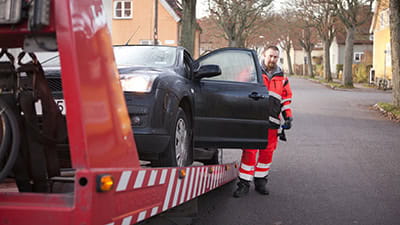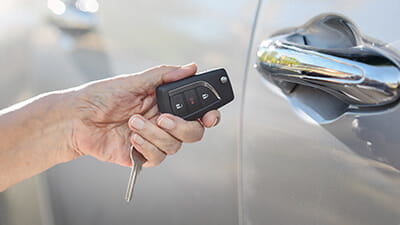
Disabled drivers often face various challenges, including finding the right car insurance. Many insurance companies offer special policies designed to meet the needs of disabled drivers.
But what does disabled driver car insurance actually cover? And how is it different from a standard policy? Discover all the details in our guide.
As a disabled driver, you might need a different type of car insurance than a standard policy. This is because your car may have special modifications, such as:
No two disability car insurance policies are the same, as everyone’s needs are different. So, when getting a quote, you must provide all the necessary details of modifications so that the insurer can make sure you have the correct cover.
Even though you need a special disabled car insurance policy, you’ll still choose from the same three types of cover as regular car insurance: third-party, third-party fire and theft, and comprehensive.
Getting a specialised disabled driver car insurance policy ensures your car and its modifications are covered against accidental damage, and you can drive legally. You’re also covered if your car is lost or stolen. If you only get a standard policy, your modifications won't be covered, which could be a problem if you need to make a claim.
Other things that disabled car insurance might cover include:
Most policies vary depending on the provider, and some things may need to be added on as extras. Check your policy to see what’s included.
Disabled drivers can apply for a Blue Badge to make parking easier. With a Blue Badge, you can park on single or double yellow lines for up to three hours and park for free at pay-and-display car parks or parking meters without time restrictions. In London, you don't have to pay the Congestion Charge if you have a Blue Badge.
Having a Blue Badge might also lower your car insurance costs because some insurers offer discounts. This is because Blue Badge holders can often park in safer spots, reducing the risk of damage or theft.
However, not all insurers offer this discount, so it's a good idea to check with your provider. Remember, many factors can affect your insurance cost, including your age, address and driving history.
The Motability scheme lets you borrow a new car or wheelchair-accessible vehicle for at least three years. You do this by using your qualifying mobility allowance. These vehicles come with accessories and adaptations to make them accessible, and you’ll get a car that best suits your specific needs.
When you get a car through the scheme, your car insurance is included, so you don't need to buy a separate policy. This insurance covers things like accidents, fire, theft, vehicle loss, agreed modifications and a replacement vehicle if needed. You can also add up to three drivers, and they can be changed as required.
The scheme also provides breakdown cover, takes care of services and MOTs and covers the cost of installing a home charge point.
To get a disability car through the Motability scheme, you need to receive a benefit for your disability or medical condition (also known as your qualifying mobility allowance). Here are the benefits that qualify:
You also need to have at least 12 months left on your benefit when you apply. Payments are made straight from your allowance provider to the scheme.
You don't need to inform the DVLA if you have a blue badge. However, you must tell them if you have a disability or medical condition that could affect your driving, or if your condition has worsened since you got your driving licence.
Personal Independence Payment (PIP) is a qualifying benefit that enables you to apply for a disability vehicle through the Motability scheme. Once enrolled in the scheme, your car insurance is arranged for you.
If you have a disability, you can apply for a vehicle tax exemption. You still need to have vehicle tax, but you won't have to pay for it if you qualify.
To apply, the vehicle must be registered in your name or your nominated driver's name. If it's in the nominated driver's name, they can only use the car to drive you around.
You can only get a tax exemption for one vehicle. If you have more than one car, you need to choose which one will be exempt from vehicle tax.
Whether you're looking for straightforward insurance or cover that's packed with extras, our car insurance has plenty of options for people over 50.


Choose our highest car cover level Saga Plus and freeze the price of your car insurance for 3 years if nothing changes. T&Cs apply.
There's plenty to explore and learn about our car insurance cover.

Choose Saga Plus and fix the price of your insurance for the next 2 renewals, if nothing changes. T&Cs apply

Discover everything you need to know donating a car to charity in our detailed and comprehensive guide.

Explore our comprehensive guide to car insurance fraud, where you’ll find detailed insights into the various types and their potential consequences.

Losing a pair of car keys can be hugely frustrating, but could Car Key Protection Cover give you valuable protection?

Learn everything you need to know about cancelling car insurance, from the steps to take to potential refunds.

When there’s a delay in receiving your certificate of motor insurance, cover notes come to the rescue.

Just because you have comprehensive car insurance doesn’t mean you can automatically drive another car third party on the same cover.

Need help? Take a look through our most frequently asked car insurance questions - you may find the answer you're looking for.